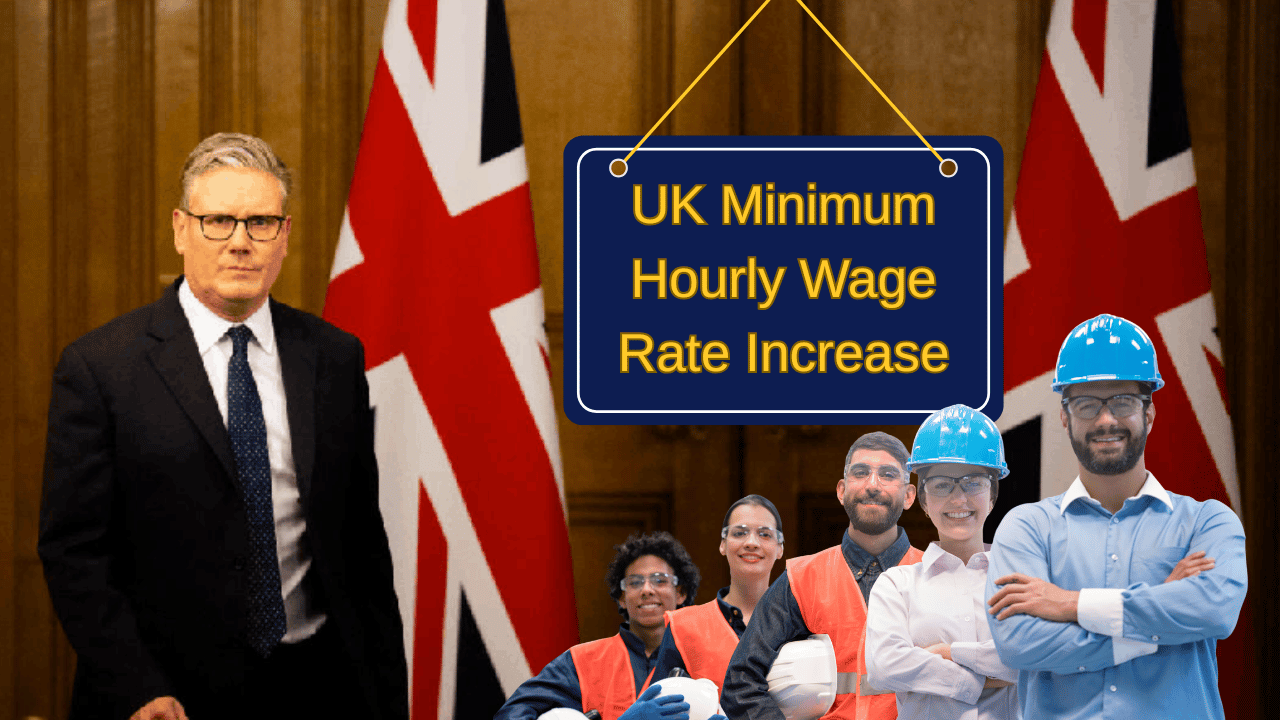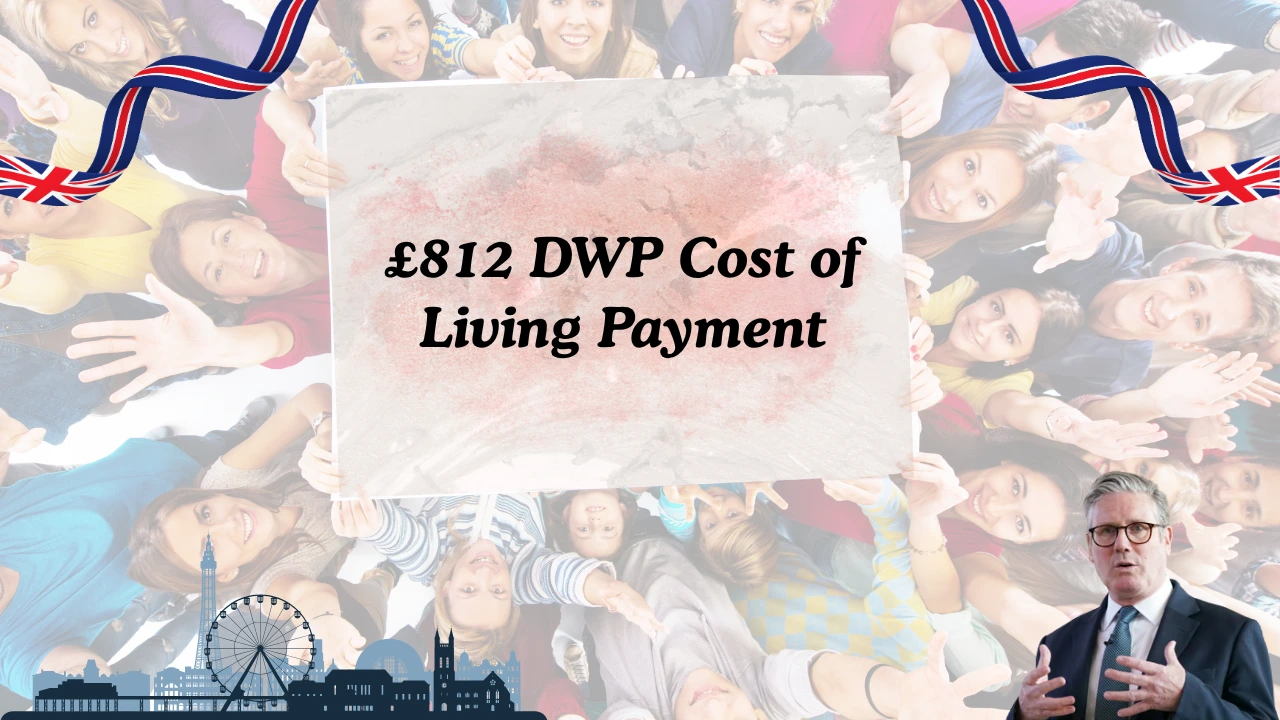Hello everyone — in a significant move to support the workforce amid rising living costs, the UK Government has officially confirmed new minimum wage rates that will come into effect from 19 October 2025. These changes are designed to ensure fairer pay across all sectors and help workers maintain financial stability. This article explains the updated rates, who they apply to, and how both employees and employers should prepare for the shift.
UK Minimum Wage Per Hour Increase October 2025
From 19 October 2025, all UK employers must abide by the revised hourly pay rules under the statutory minimum wage framework. The update introduces strengthened rates based on age and employment category. Though previous legal upratings took effect on 1 April 2025, this October change signals a further (or clarifying) update to the schedule. (Note: Some earlier sources cite April 2025 increases; this article reflects the 19 October date as per the announcement.)
Here’s the table of new rates:
| Worker category | Hourly rate from 19 Oct 2025 |
|---|---|
| National Living Wage (age 23 and over) | £12.20 |
| Age 21–22 | £11.40 |
| Age 18–20 | £9.80 |
| Under 18s | £7.20 |
| Apprentices | £7.20 |
These rates apply to part-time and full-time employees and cover all four nations of the UK (England, Scotland, Wales, Northern Ireland).
Why the Increase Matters
The decision to raise the minimum wage is rooted in several policy goals:
- Cost of living pressure: With inflation, rent, utilities and everyday expenses increasing, the rise helps low paid workers maintain buying power.
- Fair pay across sectors: It aims to reduce inequality and ensure that workers in roles traditionally paying near minimum wage get a more equitable reward.
- Economic stimulation: Higher wages mean more disposable income, which can boost local spending and support business growth.
- Government policy alignment: The rise is part of a broader plan (“Better Pay, Better Britain”) to build a stronger, fairer economy.
According to expert commentary, the increase is timely: “The adult minimum wage will again be pegged to increases in typical wages,” one economist noted. (resolutionfoundation.org)
Who It Applies To
Eligibility Rules
- All workers who fall under the national minimum wage laws are covered.
- The new hourly rates apply from the effective date (19 Oct 2025).
- Full-time, part-time, casual and agency workers are included.
- Age bands determine which rate applies (as the table above shows).
- Apprentices are covered by the apprentice rate (for those under 19 or in first year of apprenticeship) unless they’re aged 19+ and beyond first year – then other age band rules may apply.
Benefit Groups
Workers who will benefit most include:
- Those in sectors with high minimum-wage incidence: hospitality, retail, care homes, cleaning services.
- Young employees (18–22) and apprentices who are receiving rates bumped up.
- Low-income earners whose pay is currently close to minimum wage levels and will see a relative uplift.
Payment / Processing Details
Here’s how employers and workers should respond to the changes:
| Step | What to do |
|---|---|
| For Workers | Check your payslip from the effective date to ensure your hourly rate is updated. If you’re earning less than the legal minimum, you may report to HMRC. |
| For Employers | Review your payroll systems and update them ahead of the 19 Oct 2025 date. Communicate the change to staff. Adjust forecasting/budgets to reflect higher wage costs. |
| Compliance | Failure to apply the correct rate can lead to penalties, back-payments and reputational damage. |
Comparison & Extra Insights
How These Rates Stack Up
Here’s a comparison of how minimum wage rates have evolved:
| Date | Age band (adult) | Hourly rate |
|---|---|---|
| 1 April 2024 | 21+ | £11.44 (GOV.UK) |
| 1 April 2025 | 21+ | £12.21 (UK Government Publications) |
| 19 October 2025 | 23+ (or 21–22) | £12.20 (or £11.40 for 21–22) — as per latest update |
Expert Insight
- “Today, the Government has announced that the adult minimum wage will again be pegged to increases in typical wages.” (resolutionfoundation.org)
- Policy analysts suggest the increase will boost disposable income and help local economies, while business groups caution about cost pressures. (tayloremmet.co.uk)
- The Low Pay Commission (LPC) remains influential in setting these rates, balancing worker benefit with business feasibility. (GOV.UK)
Why It Matters: Impact Analysis
For Workers
- Higher take-home pay: For someone working full time on the new adult rate, the annual impact can be meaningful.
- Greater fairness: Young workers and apprentices get a relatively substantial raise.
- Financial stability: Helps offset cost-of-living pressures and reduce reliance on benefits.
For Employers
- Challenge: Employers need to absorb higher wage costs, which may squeeze margins, especially in low-profit sectors.
- Opportunity: Improved wage levels may reduce staff turnover and improve morale, which in the long run benefits productivity.
- Compliance risk: Missing the change by the deadline can incur legal and financial penalties, so planning is essential.
Recent Updates (Dates to Remember)
- 1 April 2025: Minimum wage increases implemented (adult rate £12.21 for 21+) under previous schedule. (PayrollOrg)
- 19 October 2025: Latest rate change comes into effect per government announcement.
- End of October 2025: LPC’s recommendations for April 2026 rates expected. (GOV.UK)
FAQs
Q1: When does the new rate apply?
It applies from 19 October 2025 (for the rates listed above). Employers must use the new rates when calculating pay for hours worked after that date.
Q2: Does it apply to part-time workers and agency staff?
Yes — the law covers full-time, part-time, casual, and agency workers equally under the national minimum wage regulations.
Q3: What happens if I’m paid less than the minimum wage?
You can raise the issue with your employer. If it’s not resolved, you can report it to HM Revenue & Customs (HMRC), which enforces wage-law compliance.
Q4: Are apprentices included?
Yes — apprentices have a separate rate (in the new table: £7.20) if they meet the criteria (under 19 or first year of apprenticeship). After then, the age-based band may apply.
Q5: Will there be future increases?
Yes — the Low Pay Commission will advise on rates for 2026 and beyond, and the Government has signalled the adult rate should not fall below two-thirds of median earnings. (GOV.UK)
Q6: What should employers do now?
They should audit payroll systems, inform staff, update contracts if needed, budget for increased wage costs, and ensure compliance ahead of the effective date.
Conclusion
The new minimum wage rates taking effect on 19 October 2025 mark a key step in the UK Government’s drive for fairer pay and stronger living standards for workers. For employees, it means more recognition and improved income stability; for employers, it means proactive planning and compliance to manage cost pressures. Both sides stand to benefit if the change is handled smoothly and early.
Discover-Friendly Title Suggestions
- “UK Minimum Wage Increase October 2025: What You Must Know”
- “ A Guide for UK Workers & Employers”
- “How the October 2025 Minimum Wage Hike Impacts You – Full Breakdown”
If you like, I can also create a downloadable infographic summarising the new wage bands and dates.





